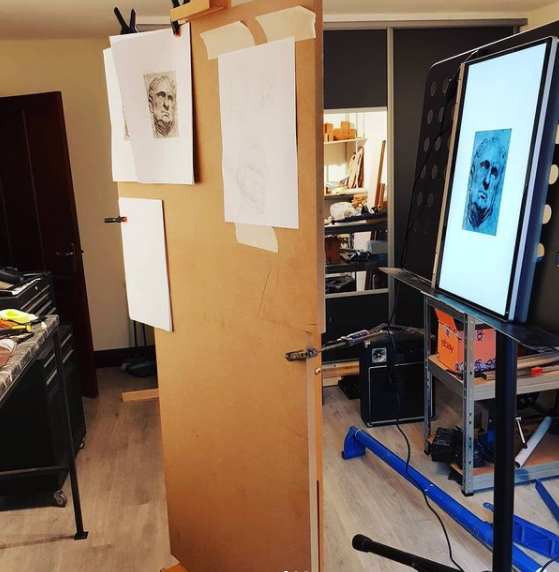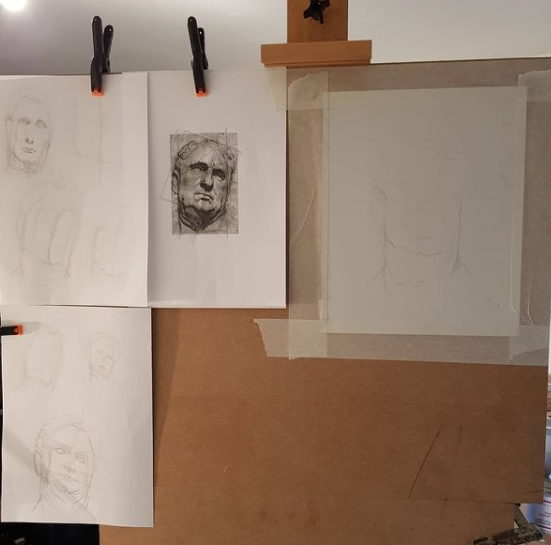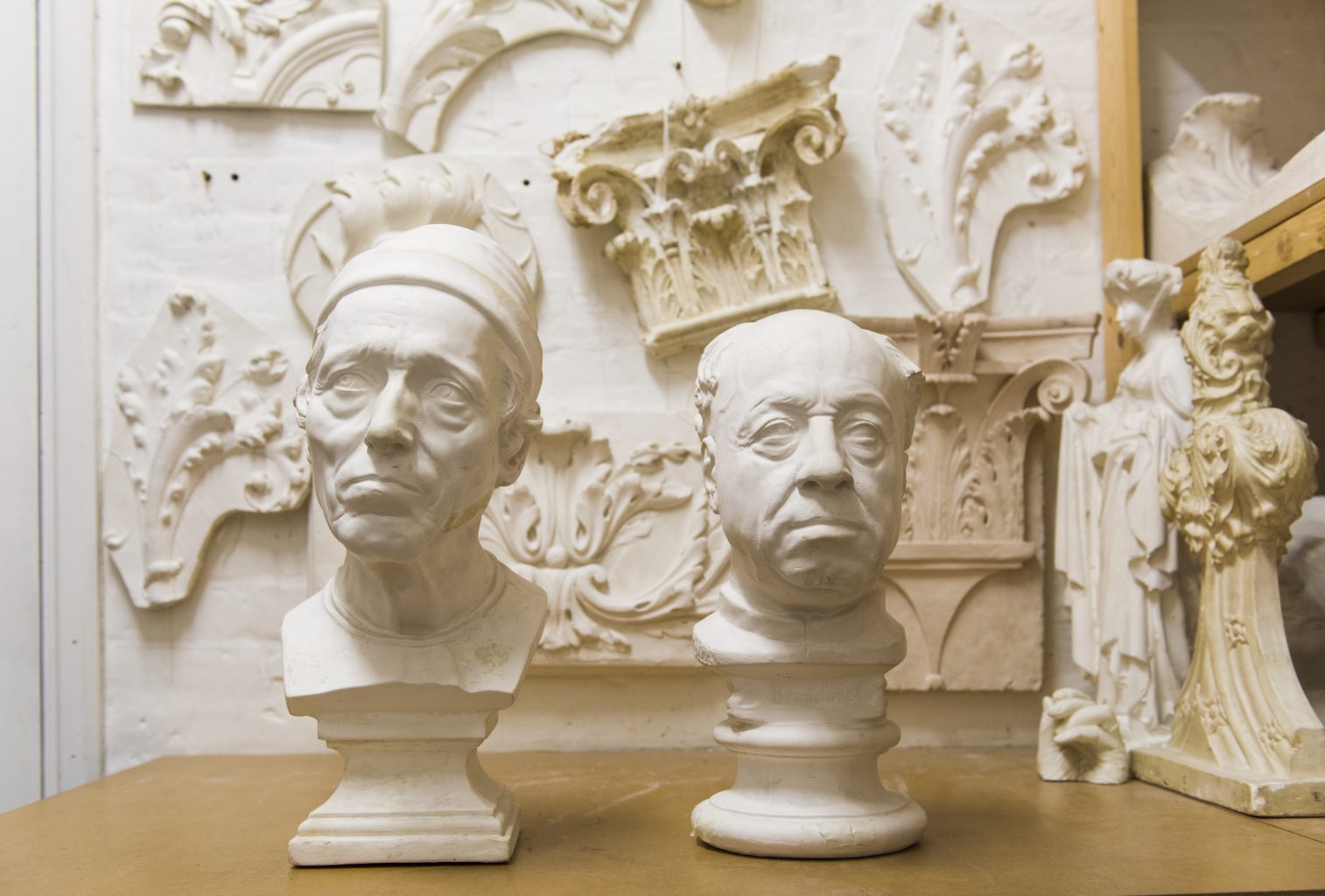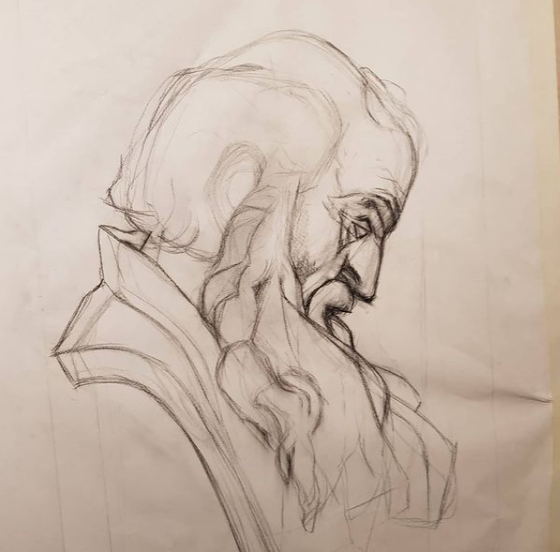We last reported on the activities of students in the first year of BA (Hons) Historic Carving: Woodcarving & Gilding before the Christmas break. Due to Lockdown #3 that started after Christmas, the Art School’s facilities have been closed and students have been studying online from home through one-to-ones, tutorials, workshops and lectures.
During the first two weeks of Spring Term, first year Historic Carving students, specialising in both stone carving and woodcarving, focused on developing their drawing skills, and in particular learning how to accurately draw the head by transcribing historic drawings and portrait busts. They were supported on this project by Drawing Studio Manager Diane Magee and Stone Carving Tutor Tom Merrett. We’ve been following the progress of student Paul Flanagan who has been recording his work on his Instagram account @paulflanaganartist. To see previous posts about Paul’s work, click here.

The students’ first task is to carefully set up their home studios with their drawing boards and the copy of the historic drawing they are following, positioned at the correct height and angle to ensure the head can be drawn with complete accuracy. The historic drawings they are copying are by Tintoretto, the Renaissance painter, and the students choose two drawings that depict the head at different angles.


Firstly they make preparatory drawings to get a feel for the images they are going to study. This stage of the drawing process helps students observe their subject in detail, gaining an understanding of the axis and orientation of the head, the major planes, proportions and gesture. Paul completes one of his preparatory drawings and starts the next transcription, which poses new challenges.
This drawing is trickier. Paul comments that “the axis, angle, direction and weight of the head is very difficult to capture.”


The next part of the project is to make a transcription of a portrait bust. For this exercise, the students are using single portrait busts that are on display at the V&A. During normal times, students on our Historic Carving courses would be using the Art School’s impressive collection of plaster casts of famous sculpture and carving for this sort of transcription work in their studios. Our precious cast collection has been a crucial resource for students for many years and we are always striving to increase it. In recent years, our collection was boosted with casts acquired from the British Museum, which has ensured that new material has been available for our students to use. These two disgruntled chaps are recent additions to our collection.


Again, the students make preparatory drawings of the portrait bust, examining the bust from different angles to build a complete understanding of this 3D sculpture.

Once they’ve chosen an angle to concentrate on, the students start their sustained drawings. They have to consider the scale of their drawings, the position of the drawing on the paper, the alignment of the features to the axes of the head. They gradually build their drawings through observation and constructive drawing methods, making adjustments as they go.




Paul’s drawing isn’t quite complete but it’s a great transcription of the bust at quite a challenging angle.
The next project the Woodcarving students are working on is lettering – we’ll report on their progress on that piece soon…
Photos courtesy of Paul Flanagan


